|
PowerISO can create Windows installation USB drive from ISO
file, you can then use the drive to setup Windows. PowerISO supports writing the
USB drive in both BIOS and UEFI mode, thus provides best compatibility for most
of computers.
Following is a list of supported Windows setup ISO file,
Windows 11, Windows 10, Windows 8 / 8.1, Windows 7, Windows
Vista, Windows XP, Windows Server 2022, Windows Server 2019, Windows Server
2016, Windows Server 2012, Windows Server 2008, ...
To setup Windows through USB drive, you will need a Windows ISO
file, and a USB drive with the storage capacity of at least 8GB. Please follow
the below steps,
Step1: Create Bootable USB Drive
-
Start PowerISO (v8.7 or newer version, download here).
-
Insert the USB drive you intend to boot from.
-
Click on "USB" toolbar button and select
"Create bootable USB drive..." from the popup menu.
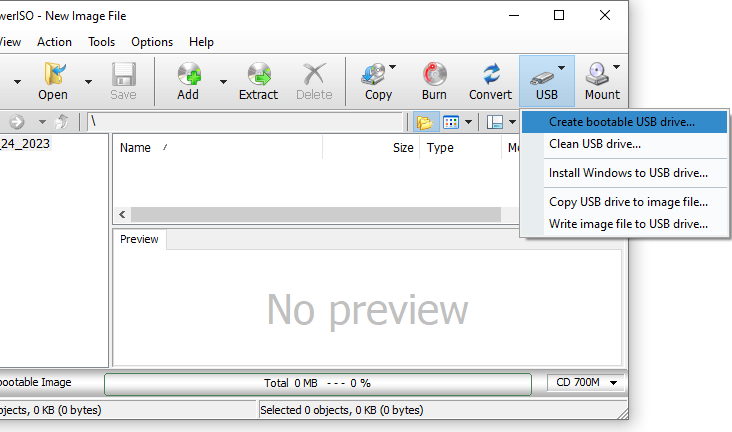
-
PowerISO requires system administrative privilege to
write USB drive, please confirm the UAC dialog to continue.
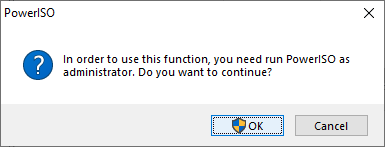
-
The "Create bootable USB drive" dialog shows.
Click browse button to select the iso file of Windows operating system.
Select the correct USB drive from the "Destination USB
Drive" list if multiple USB drives are connected to the computer. If
your USB drive is not listed, please check the option, "List USB hard
drives".
Choose the proper boot mode. For most of modern computers,
UEFI mode is
recommended. For old computers which doesn't support UEFI, or you have
enabled CSM support in BIOS settings, you can also select BIOS as the boot
mode.
Click "Start" button to start creating bootable USB drive.
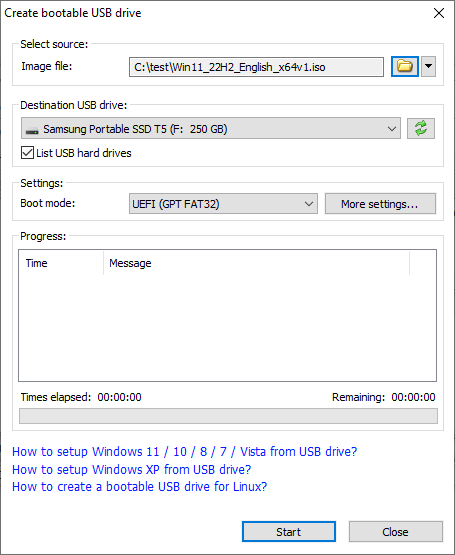
-
PowerISO will alert you that all data on USB drive will be
destroyed. Please make sure that you have backed up the important files in
the USB drive before clicking OK.
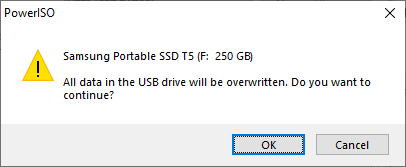
-
The program will start writing USB drive, and showing the progress
information. PowerISO will erase all partitions in the USB drive, create and
format new partitions, then write files and boot information to the USB
drive. You should get the message "Writing USB drive completed
successfully." after the process completes.
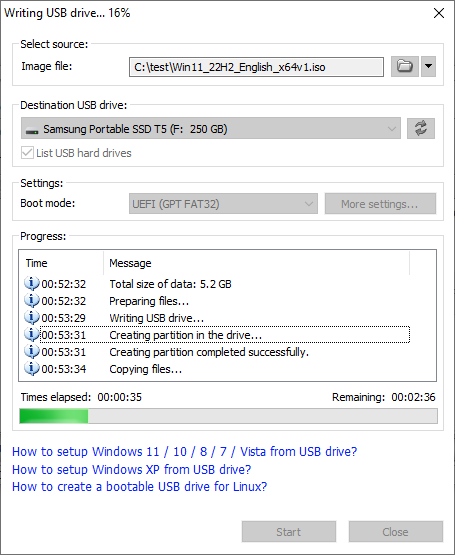
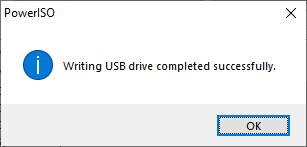
If no errors occurred in the above process, you should now be
all set to setup Windows from USB drive!
Step 2: Configure the BIOS to boot from USB drive
You should now reboot and go into the BIOS configuration to
boot from USB. Instructions for doing so vary wildly from system to system, but
generally entail the following:
-
Reboot the system.
-
While booting (before Windows starts loading), get into the
BIOS configuration screen by hitting something like F1, F2, Delete or
Escape. Hotkey instructions are generally provided on the screen.
-
Go to the section that contains your boot devices.
-
With your USB drive plugged in, the USB drive should be
listed. If it isnít, your system might not support booting from USB.
Assuming that it is supported (as is the case with virtually all modern
hardware), promote your USB drive to the primary boot device. If you created
the bootable USB drive in "BIOS & UEFI-CSM" or
"BIOS" mode, please enable the CSM support in BIOS settings.
-
Exit from the BIOS configuration, saving all changes.
Please notice that you can seriously screw up your system by
providing incorrect BIOS settings!
Step 3: Boot and setup windows from USB drive
Assuming that you properly configured your BIOS and your USB
drive supports booting, Windows setup should now load. Depending on the
speed of your USB drive, this may take a while.
If it isnít working, then double-check the following before
making a scene:
-
Is your BIOS properly configured for booting from the USB
device? (Is the USB device listed and does it have top priority?) Please
enable the CSM support if the USB drive can only support boot in BIOS or
UEFI-CSM mode.
-
Have you correctly prepared the USB drive in step one?
(Restart the procedure.)
-
Does your USB drive properly support being booted from?
(Try another one!)
Note: The above guide works with Windows 11, Windows 10, Windows 7, Windows 8 / 8.1 /
Vista, and Windows Server operating systems.
For Windows XP with SP2 or SP3 please refer to another guide at https://www.poweriso.com/tutorials/how-to-make-winxp-bootable-usb-drive.htm
.
|






